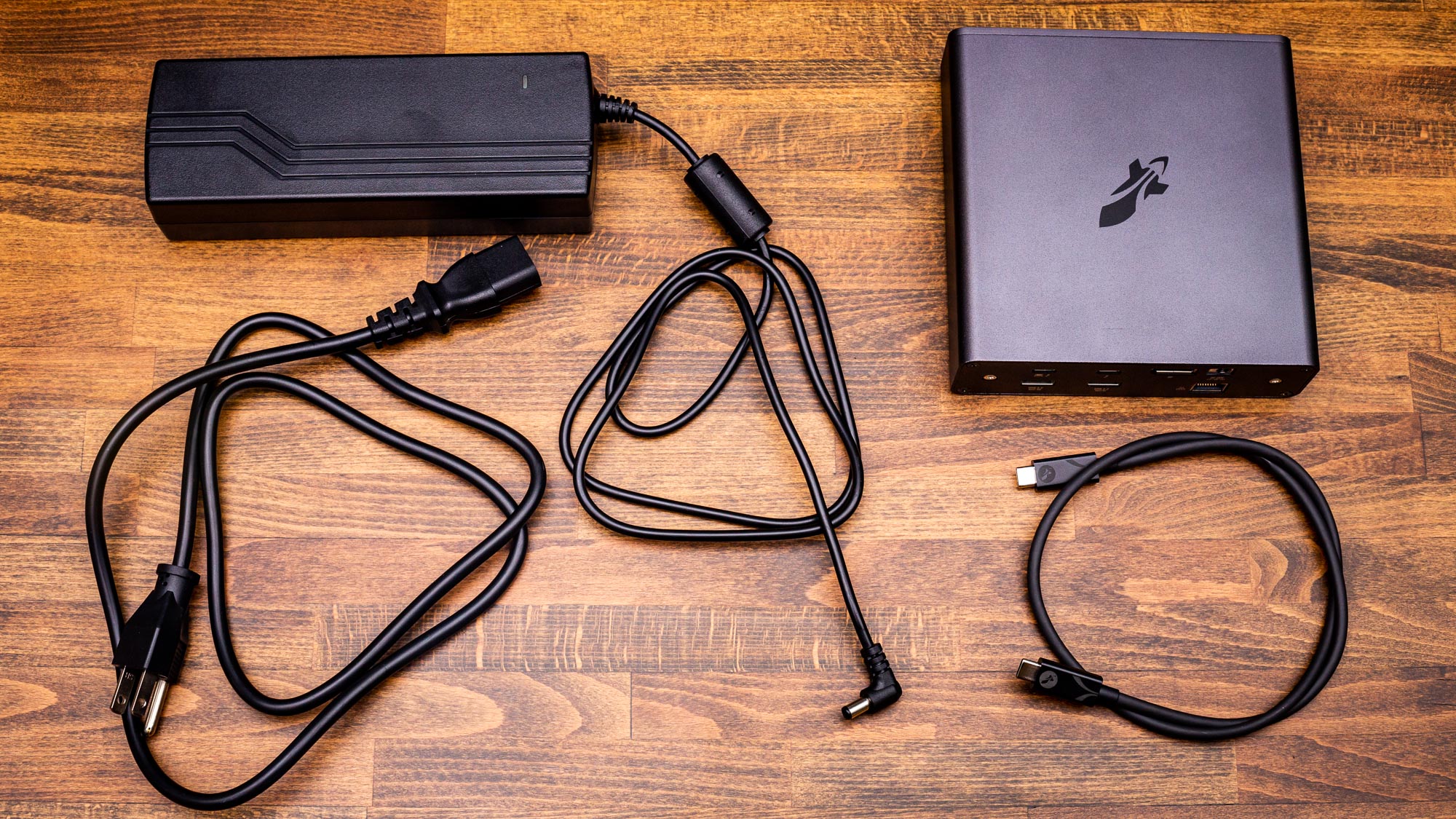Tom's Hardware Verdict
The Sabrent Thunderbolt 3 Docking Station checks all the right boxes for a premium dock, including capacious and fast storage all with a nice design.
Pros
- +
+ Full-fledged Thunderbolt 3 support, including power delivery
- +
+ Ample ports for USB devices
- +
+ Audio, SD, and ethernet ports
- +
+ Good layout and internal design, including cooling and expandability
Cons
- -
Pricing could be adjusted a bit
- -
QLC-only options, for now
- -
No TB4 or USB4 option, for now
Why you can trust Tom's Hardware
The Sabrent Docking Station comes in a variety of capacities ranging from 2TB to 16TB and comes packing copious connectivity options, including dual 40 Gbps Thunderbolt 3 ports with power delivery and a 10 Gbps USB 3.2 Type-C port, among many options.
Internally this device holds dual Sabrent Rocket Q NVMe SSDs, between 1TB and 8TB each. Since these are Sabrent Rocket Q SSDs, they each have the expected Phison E12S SSD controller with DDR3L DRAM cache paired with 96-layer Intel/Micron QLC flash, making for a potent combo that can deliver up to 1,500 MBps of throughput (and a theoretical 3,000 MBps in RAID 0).
The price per gigabyte ranges from $0.16 to $0.25 depending on the capacity, with the highest amounts coming for the 2TB SKU followed by the 16TB SKU. This makes sense as there is a static cost for the dock hardware, even at 2TB, while the 8TB drives in the 16TB model are more expensive given their high capacity.
Specifications
| Product | 2TB | 4TB | 8TB | 16TB |
|---|---|---|---|---|
| Pricing | $499.99 | $649.99 | $1,299.99 | $2,899.99 |
| Capacity (User / Raw) | 2000GB / 2048GB | 4000GB / 4096GB | 8000GB / 8192GB | 16000GB / 16384GB |
| Form Factor | Dock | Dock | Dock | Dock |
| Interface / Protocol (Internal) | PCIe 3.0 x4 / NVMe 1.3 | PCIe 3.0 x4 / NVMe 1.3 | PCIe 3.0 x4 / NVMe 1.3 | PCIe 3.0 x4 / NVMe 1.3 |
| Controller | Phison PS5012-E12S | Phison PS5012-E12S | Phison PS5012-E12S | Phison PS5012-E12S |
| DRAM | DDR3L | DDR3L | DDR3L | DDR3L |
| Memory | Micron 96L QLC | Micron 96L QLC | Micron 96L QLC | Micron 96L QLC |
| Sequential Read | 1,500 MBps | 1,500 MBps | 1,500 MBps | 1,500 MBps |
| Sequential Write | 1,500 MBps | 1,500 MBps | 1,500 MBps | 1,500 MBps |
| Sequential Read (RAID-0) | Up to 3,000 MBps | Up to 3,000 MBps | Up to 3,000 MBps | Up to 3,000 MBps |
| Part Number | DS-SKRT-D2TB | DS-SKRT-D4TB | DS-SKRT-D8TB | DS-SKRT-D16TB |
| TBW | 260TBW | 530TBW | 940TBW | 1800TBW |
| Warranty | 3-Year | 3-Year | 3-Year | 3-Year |
Features include:
- 2x Thunderbolt 3 ports, up to 40 Gbps
- 2x USB 3.2 Type-A ports, up to 10 Gbps (USB 3.2 Gen 2x1)
- 1x USB 3.2 Type-C port, up to 10 Gbps (USB 3.2 Gen 2x1)
- 1x USB 3.0 Type-A port, up to 5 Gbps with BC1.2 5V@2.4A charging (USB 3.2 Gen 1x1)
- 1x DisplayPort 1.4
- 1x Gigabit Ethernet RJ45, 1x 3.5mm audio input, 1x 3.5mm microphone input
- 1x SD (UHS-II) card reader, up to 270 MB/s
- PD3.0-capability, up to 96W
The dock is rated up to 1,500 MBps for sequential reads and writes, but it can hit around twice that if the drives are placed in a striped software RAID-0 configuration. The latter performance metrics are not officially listed but reflect the nature of each drive being allocated two PCIe 3.0 lanes out of a total of four. This is thanks to the Intel JHL7440 controller that also supplies two Thunderbolt 3 (TB3) ports, rated up to 40 Gbps, and a single DisplayPort 1.4 output. One of these TB3 ports can provide power, and the other can daisy-chain devices.
The dock additionally has three USB 3.2 Type-A ports, one rated for up to 10 Gbps and two for up to 5 Gbps, and a single USB 3.2 Type-C port at up to 10 Gbps. USB terminology can be complicated, so we will outline these more precisely below. Additionally, there’s a gigabit ethernet RJ45 port, two 3.5mm ports for audio and microphone input, respectively, and a single UHS-II SD card reader rated for up to 270 MB/s. The dock can also provide power delivery of up to 96W via PD3.0.
The dock comes with a three-year warranty and an endurance rating (TBW - Terabytes Written) equal to one of the two drives. For example, as reviewed, the 16TB dock is warrantied to absorb 1.8 petabytes of write data, as would be the case with just one of its two internal 8TB Sabrent Rocket Q SSDs.
Software and Accessories
The Sabrent Rocket Dock comes with a 150W power adapter, including a detachable power cable and a single 27” ThunderBolt 3 cable. No software is included, but, as usual, we point to the myriad of free solutions available. For RAID, it’s possible to use Windows to build a software array either through Disk Management or Storage Spaces. Similar options exist with other operating systems, such as Disk Utility on OS X.
Get Tom's Hardware's best news and in-depth reviews, straight to your inbox.
A Closer Look

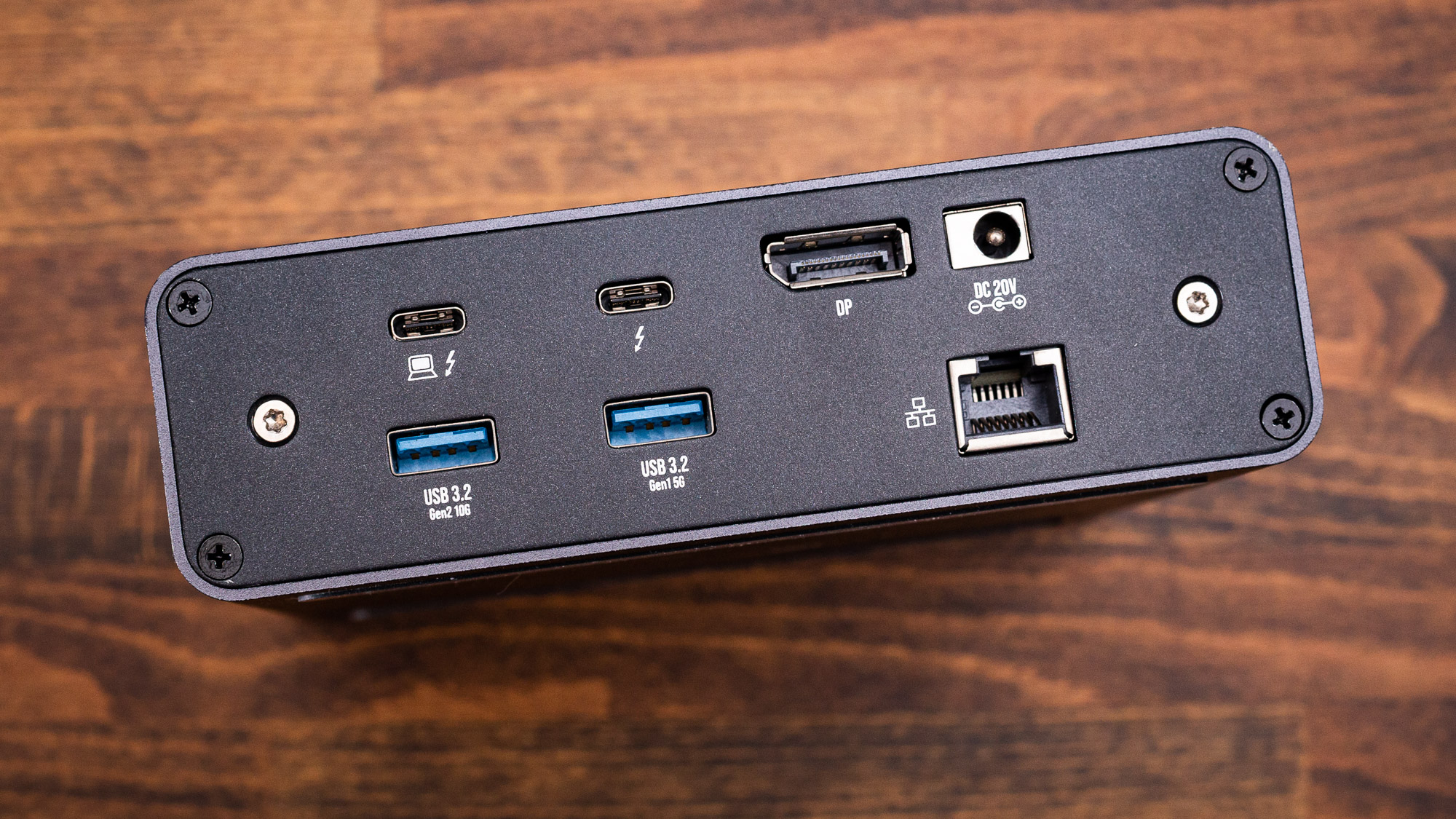
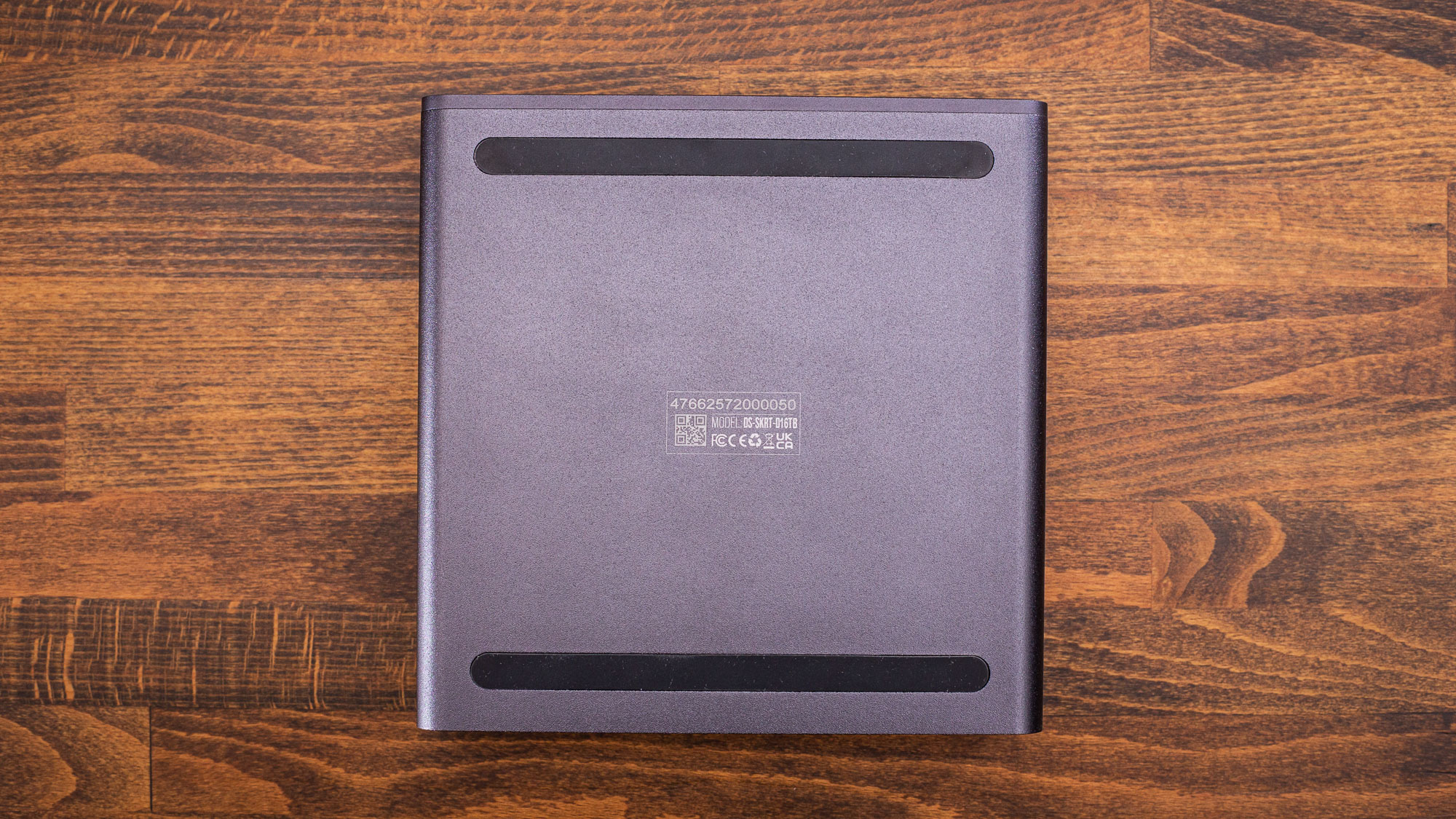
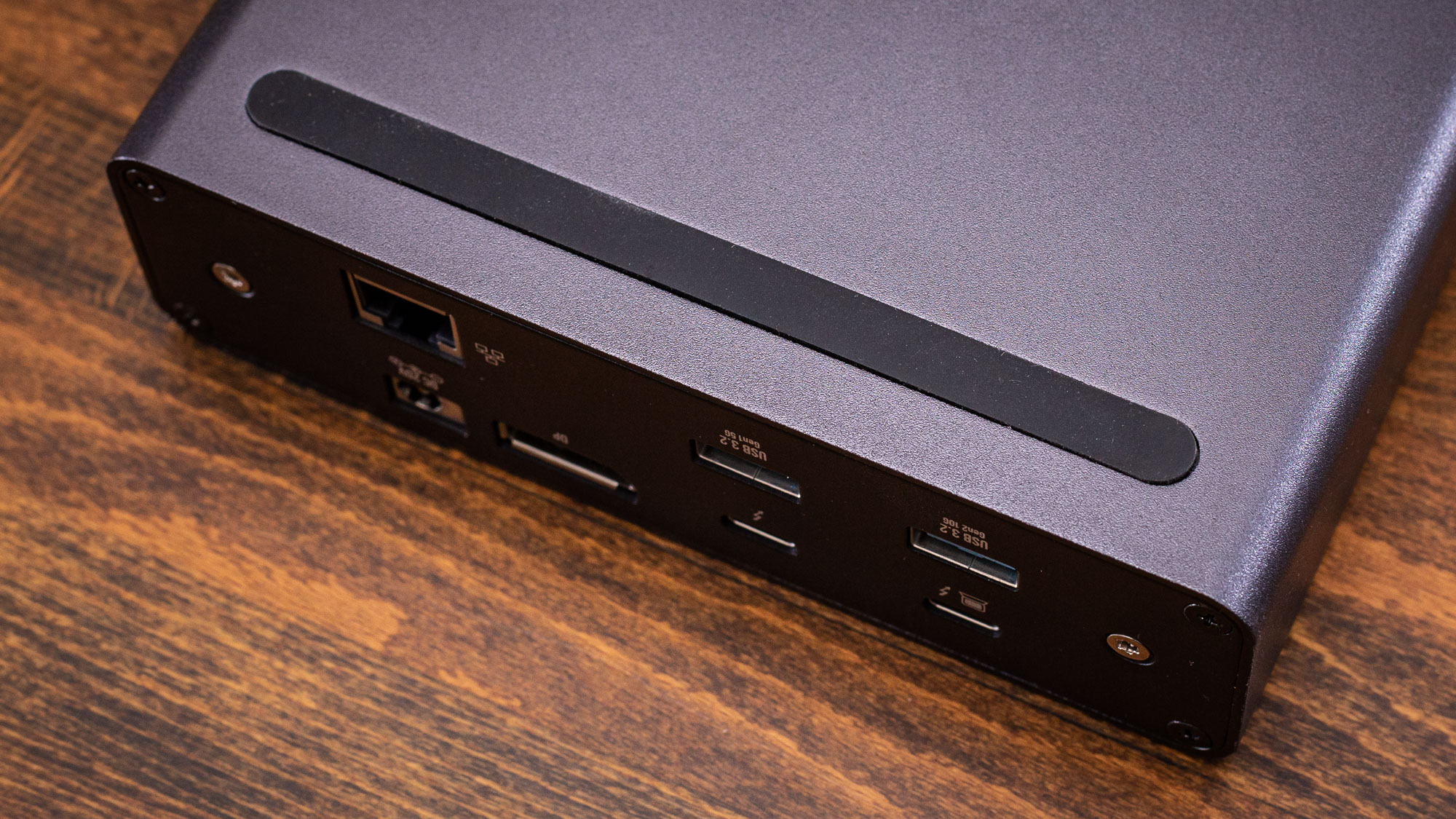
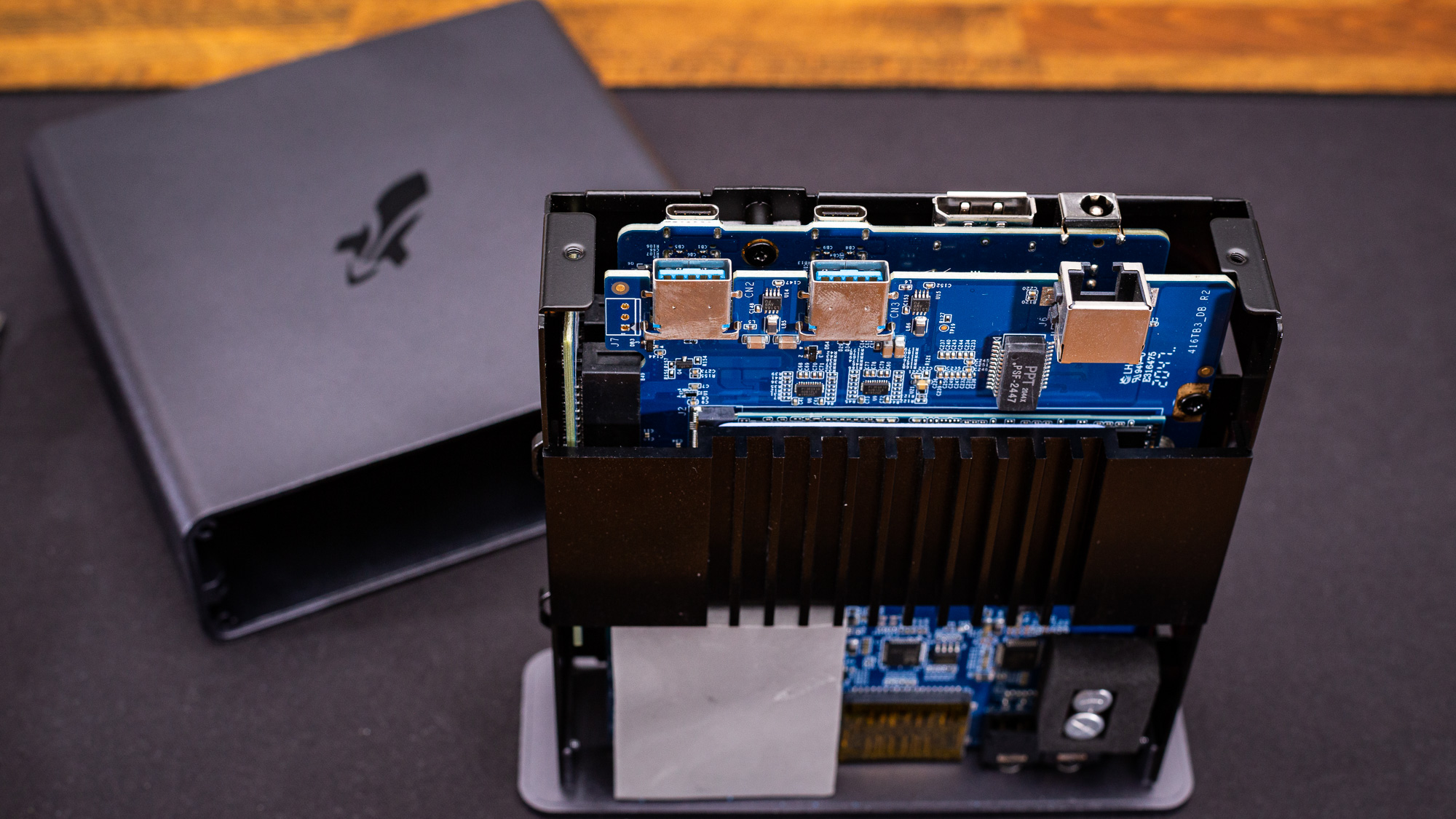

Although we have already covered the available ports above, we can see that Sabrent has clearly labeled their ports for the ease of the user. We can, for example, determine which TB3 port provides power.
It’s worth pointing out again that the USB specification has been confusing for a while now - Sabrent labels all the ports as USB 3.2, indicating Gen1 or Gen2 and the speed. The USB 3.2 Gen1 ports are Gen 1x1, equivalent to USB 3.1 Gen 1 or USB 3.0, while the USB 3.2 Gen2 ports are Gen 2x1, the same as USB 3.1 Gen 2 or USB 3.1. The former is rated at 5 Gbps with 8b/10b encoding for an actual output of around 450 MBps, while the latter are 10 Gbps with 128b/132b encoding for closer to 1000 MBps.
The dock opens easily to reveal two separate boards, connected via PCIe slots in a folded manner to reduce volume, and a heatsink for the NVMe drives and structural support. There is also thermal padding and additional component protection.

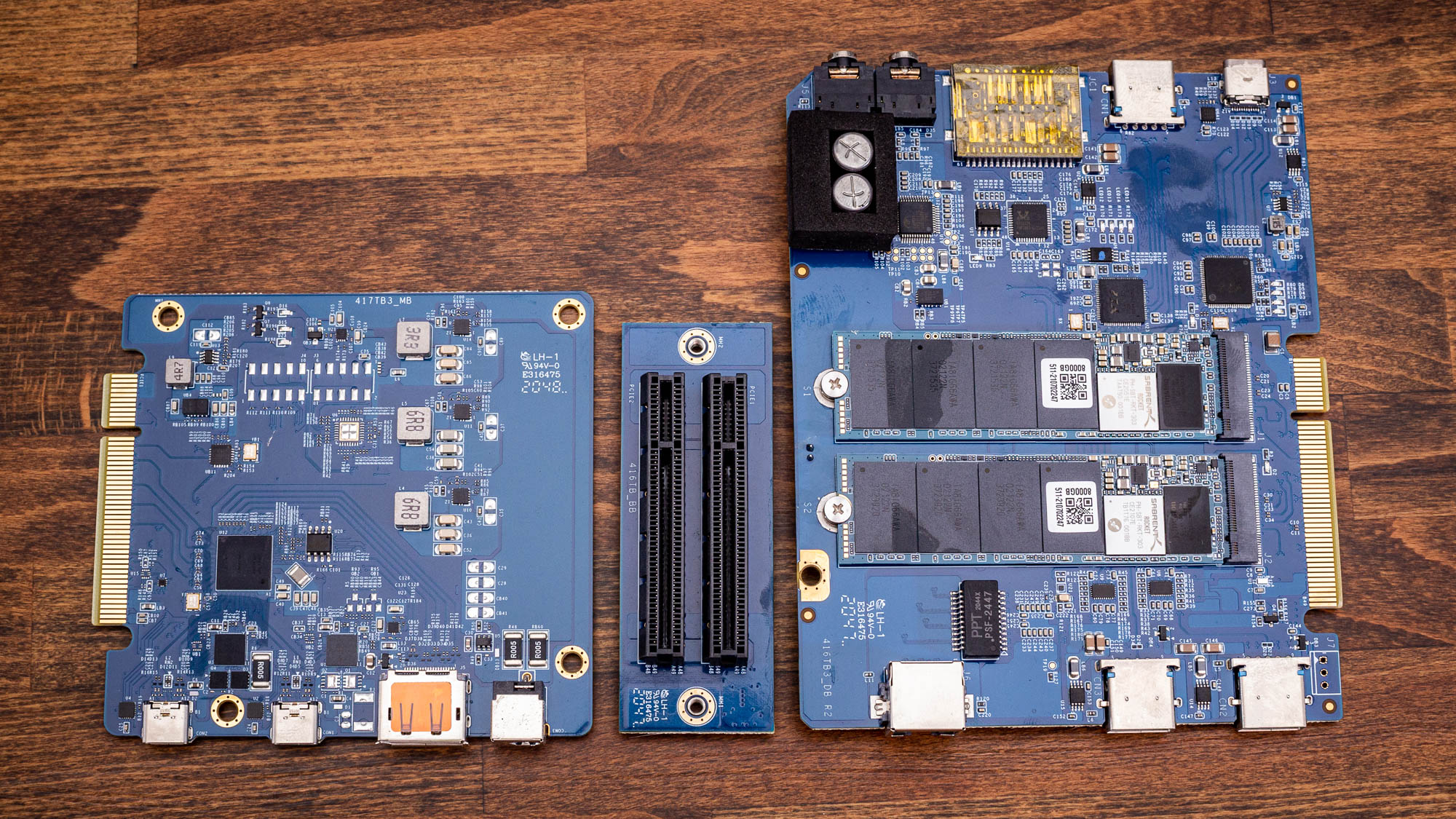

Removing the heatsink shows that there is good contact with the SSD controllers and sufficient contact for the DRAM, although perhaps not sufficiently tight flash package engagement. Typically the controller on the SSD runs the hottest with regard to thermal influence - that is, the controller is the most significant contributor to throttling. We would not expect throttling to be an issue with this sort of contact, especially given that speeds will be limited by the interface.

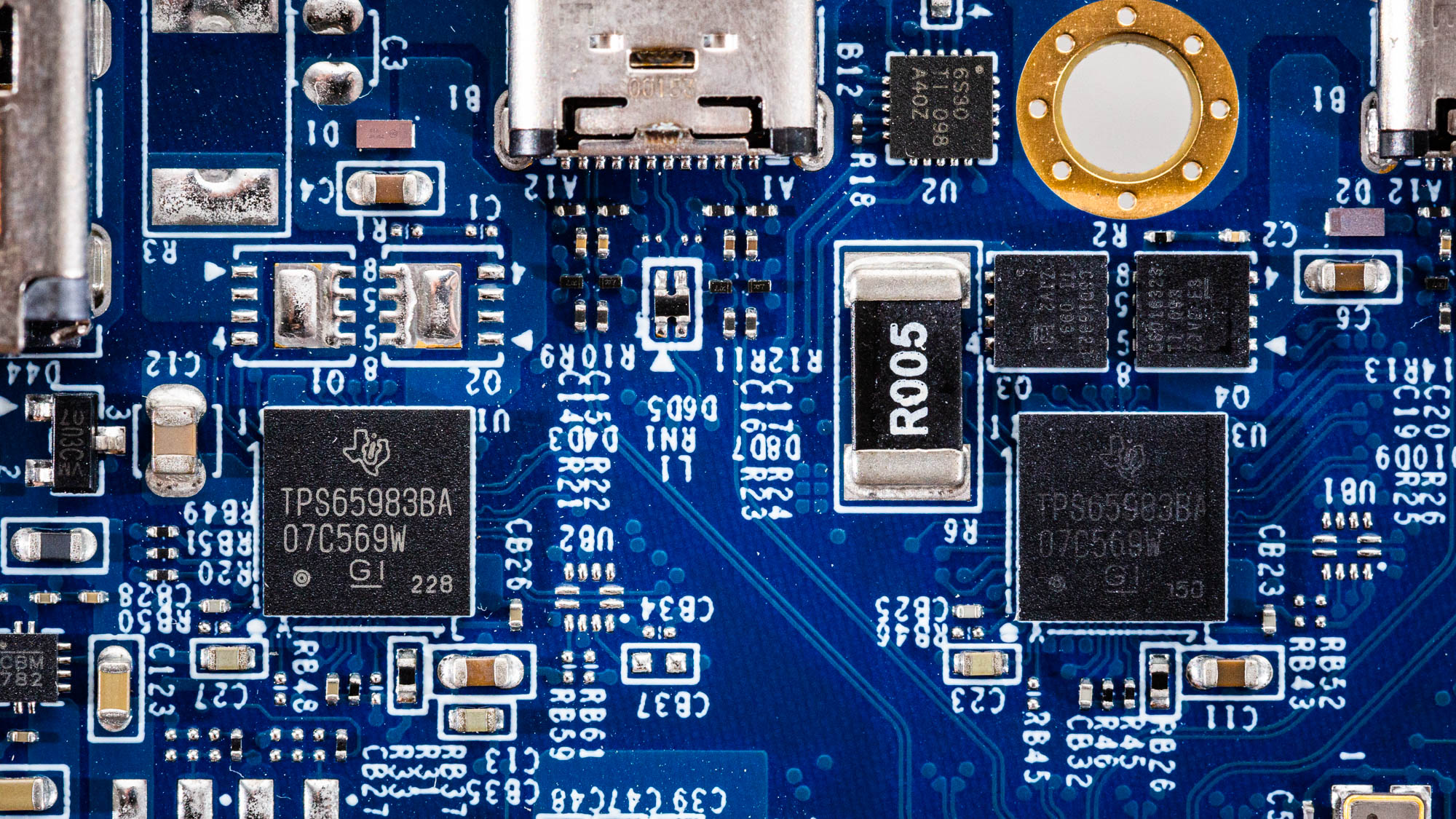
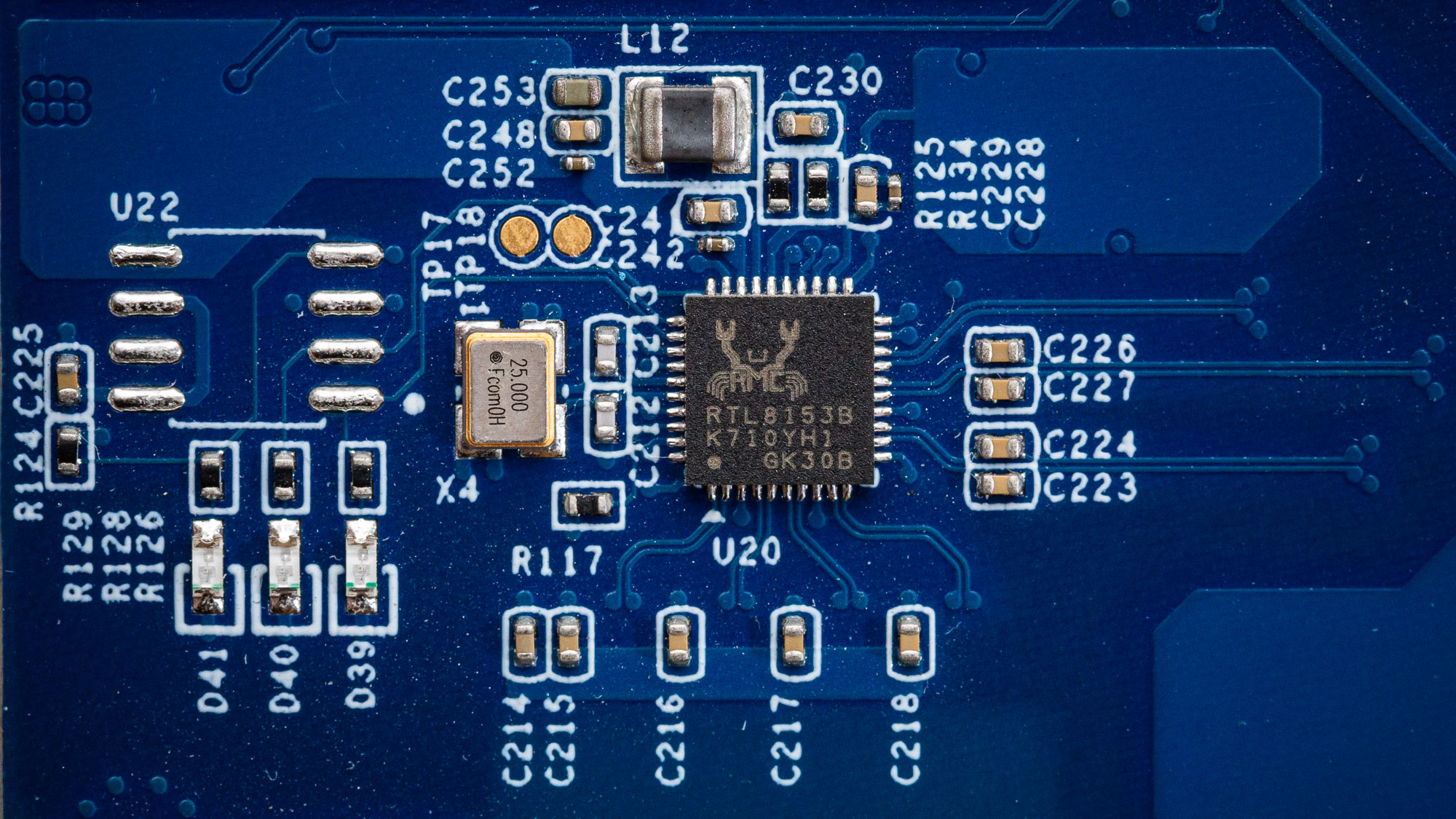
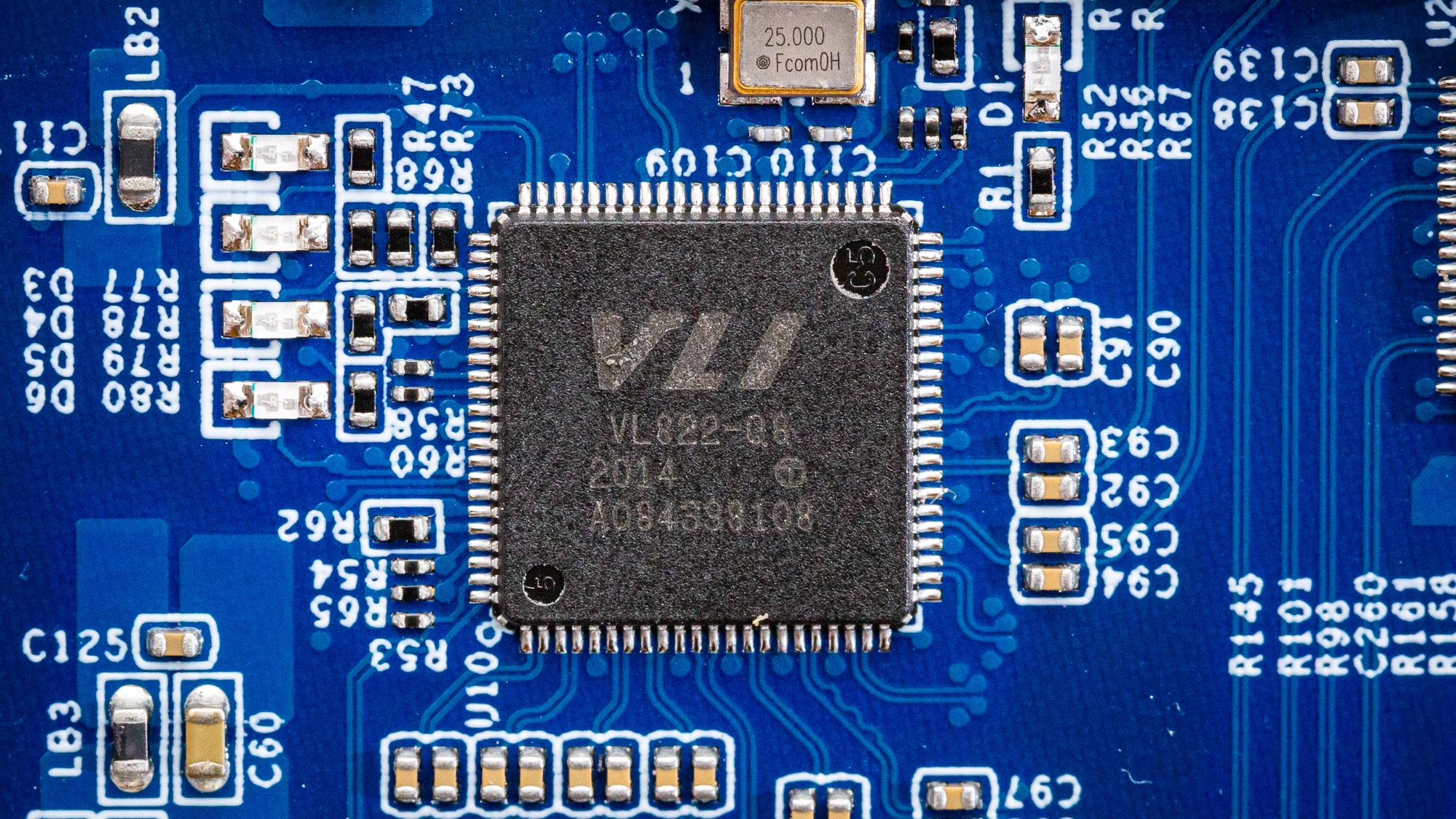

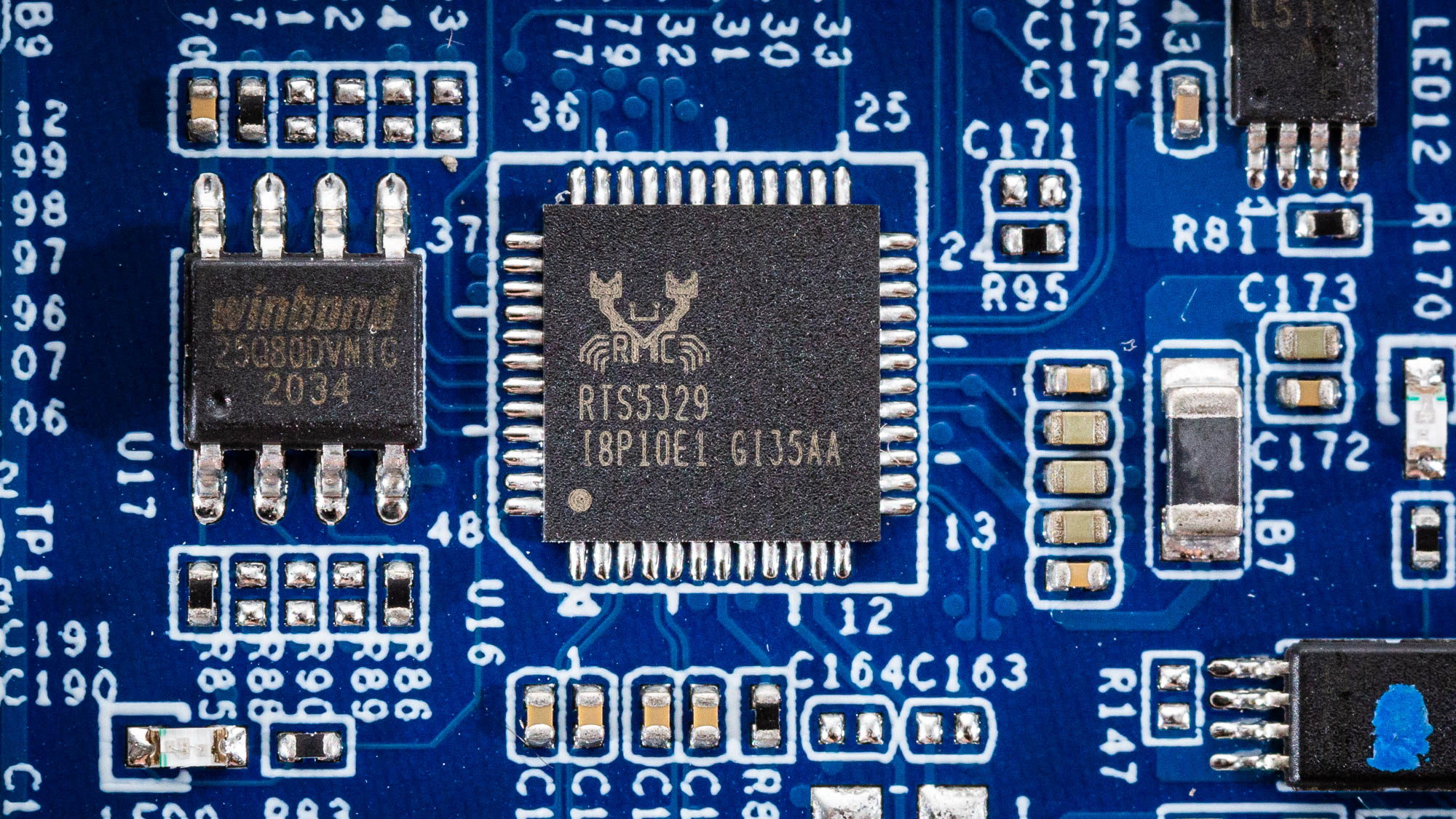
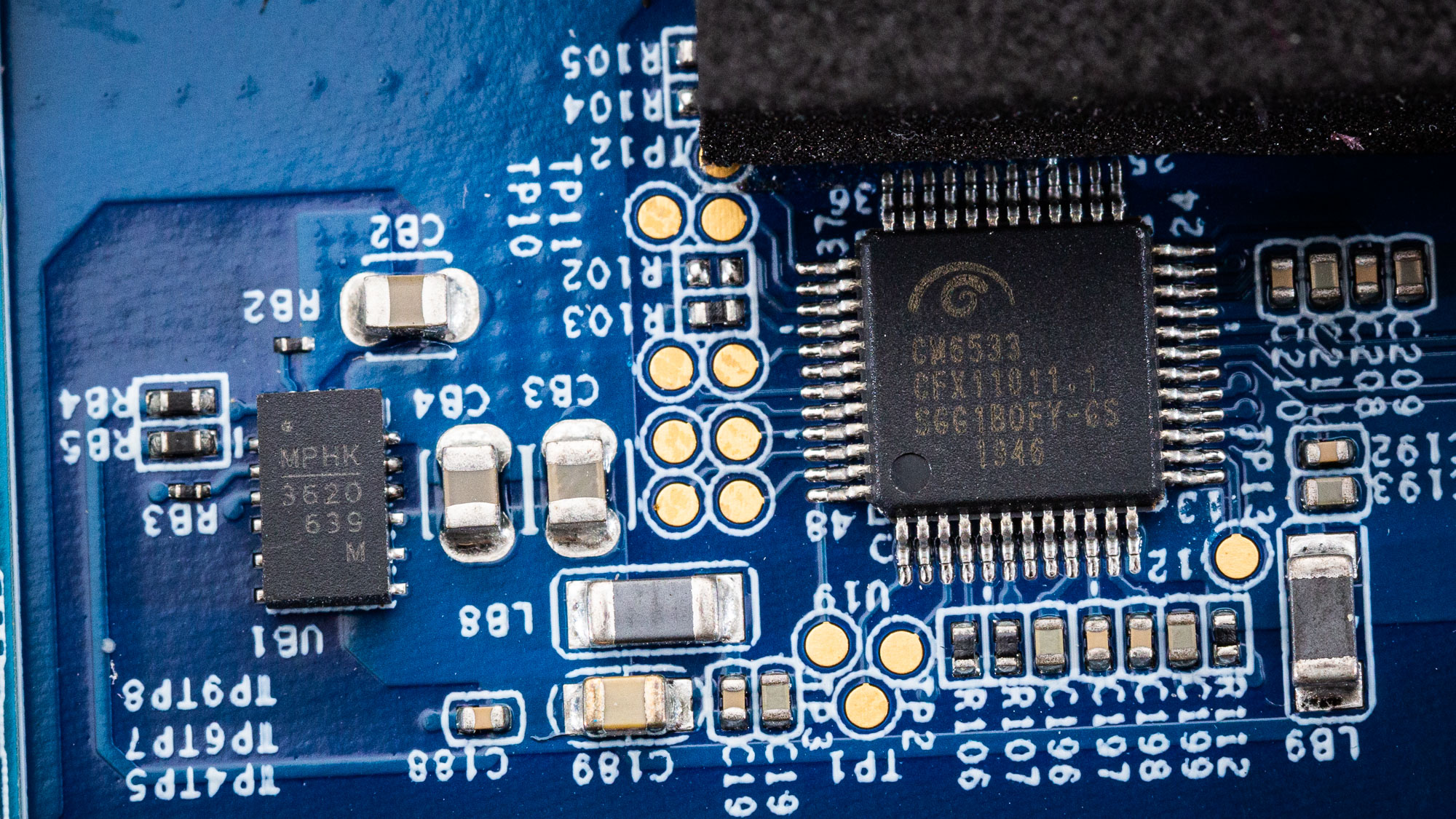
A closer look at the main components gives us some idea about how the dock comes together. First, we have Intel’s JHL7440 Thunderbolt controller, a.k.a. Titan Ridge, which supplies the most significant features of the dock, including bandwidth and connectivity for the two internal SSDs.
The Thunderbolt 3 and DisplayPort video outputs support 4K displays at up to 60 Hz or 8K up to 30 Hz, with HDR, HDCP 2.2, and Adaptive Sync compatibility. TB3 also supports other devices, including four PCIe 3.0 lanes utilized by the internal SSDs. Daisy-chaining of up to six devices is supported, as is power delivery up to 96W or 15W for bus-powered devices. Thunderbolt is provided at either 20 or 40 Gbps and is bidirectional with connection support up to 10 Gbps for USB or ethernet.
The USB ports are provided by two 2-/4-port USB hub chips manufactured by VIA Labs, or VLI, with the USB 3.1 Gen 1 (USB 3.2 Gen 1x1) VL817 and USB 3.1 Gen 2 (USB 3.2 Gen 2x1) VL820-Q8. In addition, these controllers support battery charging specification 1.2 (BC1.2), which would output up to 2.4A at 5V but can scale depending on device support.
Realtek’s RTS5329 SD4.0 controller provides the SD slot. In addition, the CMedia CM6533 is utilized for the two audio ports. Lastly, the Realtek ERL8153b is the gigabit ethernet controller.


Here we have the two Sabrent-branded NVMe drives. These appear to be standard 8TB Sabrent Rocket Qs with Sabrent-branded Phison E12S controllers, Kingston DDR3L - in 512M x 16b or 1GB modules - and 8TB of 96-layer flash provided by Intel/Micron. These are solid options if your goal is to maximize the amount of storage in a small amount of space, for example with a NUC or inside a dock. 16TB of total space is a substantial amount given the small footprint. There’s also always the option for RAID, for example, software RAID-0 to double the capacity and performance. RAID-1 or a mirror is also a compelling option for redundancy.
It’s worth mentioning that RAID-0 is technically prone to higher failure rates as an issue with either drive in the array will cause a loss of data due to striping. Likewise, RAID-1 should not be relied upon to secure your data as it is a form of redundancy and not a backup solution.
MORE: Best SSDs
MORE: How We Test HDDs And SSDs
MORE: All SSD Content

Shane Downing is a Freelance Reviewer for Tom’s Hardware US, covering consumer storage hardware.
